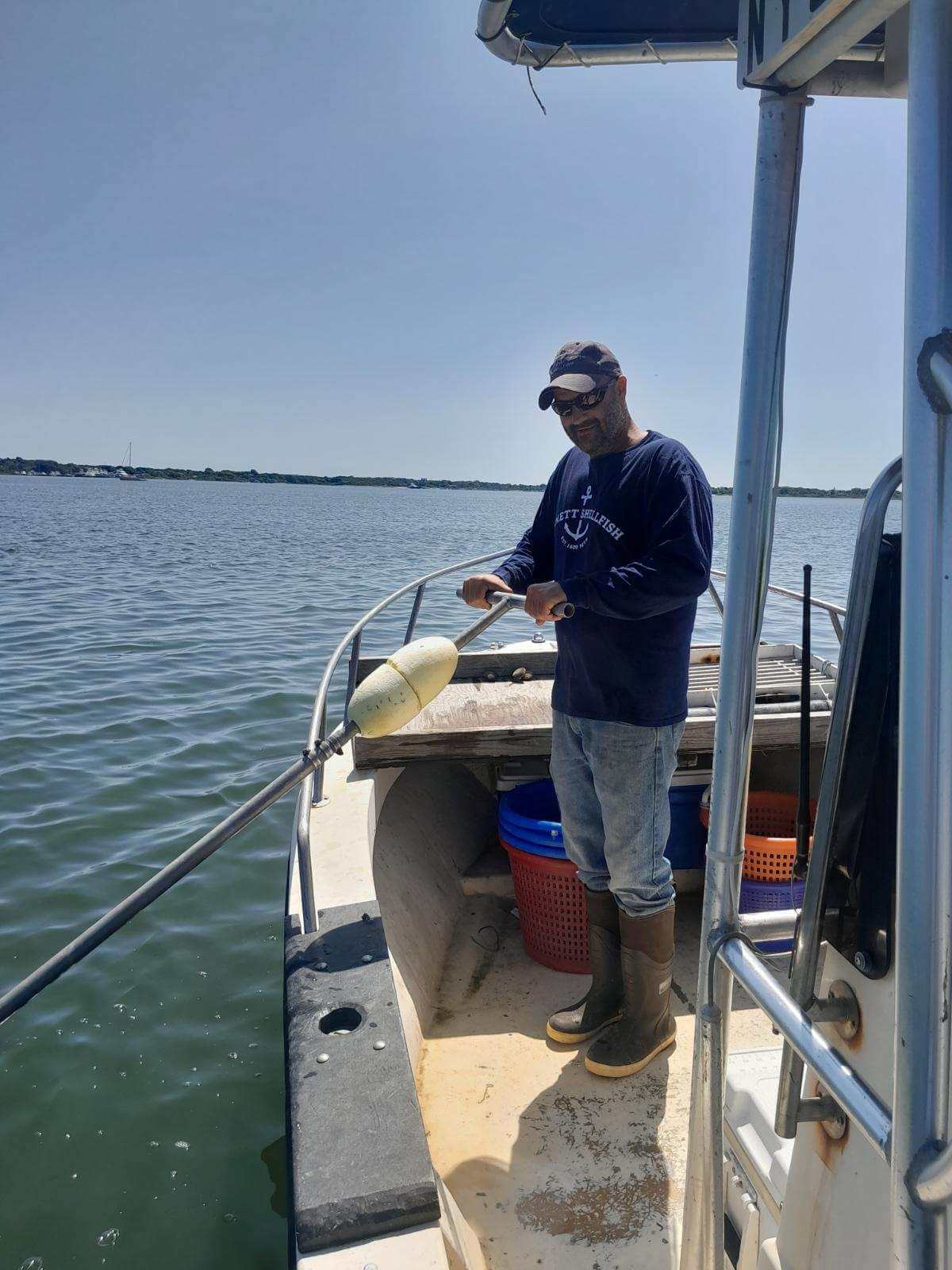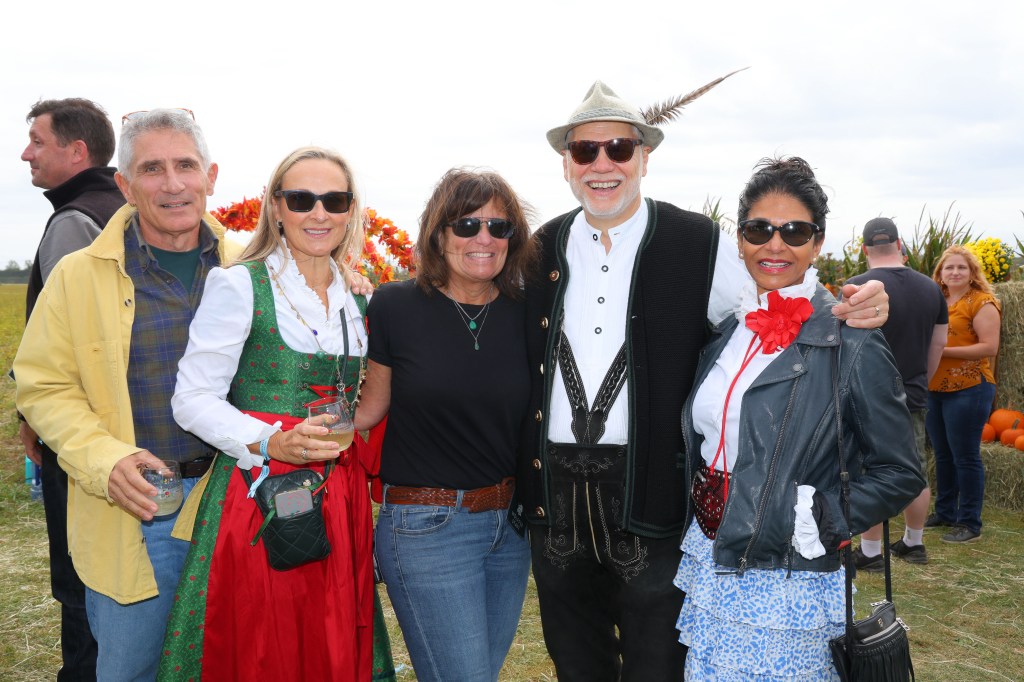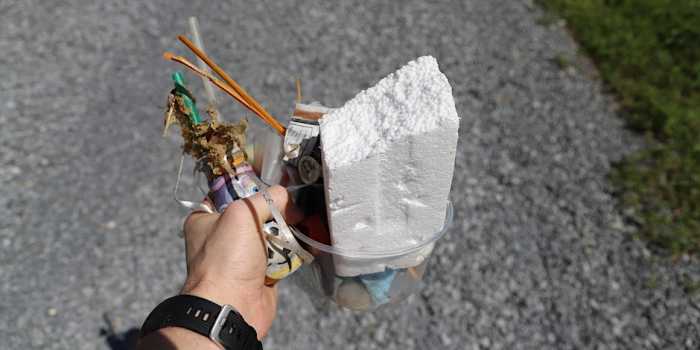Working the Water: Bayman Clint Bennett Discusses His Family Business

It’s a typical day for Clint Bennett, who loads his white and blue Privateer motorboat, which he calls “Catch ‘Em Up,” onto his white Toyota Tacoma truck. He heads down to one of seven harbors he frequents, though Lake Montauk is possibly his favorite home harbor.
“I putter my way out to the clamming grounds and I clam as long as I need to,” he says. “Some days it’s quicker. Some days are longer.”
Bennett throws a bull rake, a clam rake that stretches up to 30 feet, overboard and jerks it up and down and back and forth for about 20 minutes before pulling it to the surface. He dumps clams onto a cull board to separate them into sizes such as little necks, top necks, cherries and chowder clams.
“You’ve got to separate those,” he says of the haul that can easily reach 150 in the rake head. “I separate them into separate baskets.”
While this may be just another day at the “office” for Bennett, it is also part of a tradition dating back generations and hundreds of years, part of a challenging and challenged East End fishing and clamming industry.
“My entire family is involved in fishing. My cousins, my brother. This is what the East End is all about, the commercial fishing industry and the way of life,” Bennett says of possibly the East End’s most time-honored profession and tradition. “The way of life out here is working the water. A lot of people get it confused with hotels and nightclubs. This place is sacred fishing grounds. It’s kind of forgotten about.”
Bennett says he is a 14th generation bayman and part Cherokee on his father’s side. His grandfather on his mother’s side was a commercial fisherman and bayman fishing for striped bass and other fish. His father is a bayman.
Peter Matthiessen’s book Men’s Lives follows various East End fishing families, including Bennett’s. It was later adapted by Joe Pintauro as a play that premiered at Bay Street Theater in Sag Harbor.
“Even before I was born, I was on the water,” Bennett says, noting his mother went out on boats while pregnant. “When I was born, they took me and my brother, put us in car seats and strapped us in on the boats.”
Bennett says he started his career when he was about five years old, clamming with his father in Accabonac Harbor. He remembers stories of his father driving his truck out on the ice, cutting holes with chainsaws. And he and his father eeled and dug clams in Accabonac Harbor.
When he was seven, Bennett joined protests against efforts to end haul seine, fishing with long nets usually attached to the land. He carried a fish up the beach, seeking to be arrested. “They weren’t able to arrest me, because I was too young,” he says. “My mother got arrested instead.”
Billy Joel, whose song “Downeaster ‘Alexa’” tells the story of a bayman regulated out of bass fishing, joined in the protests, standing by the fishermen in a struggle between sport fishing and commercial fishing. He was arrested by state police after being handed a bass caught by an ocean seine.
“The government banned it and made them stop doing it,” Bennett says. “My uncle went to Albany and Washington to fight for it. They had to fish. They had to keep working.”
Some continued fishing while others got “land jobs” to bring in income, as Bennett grew older but did not grow out of his fishing fervor.
“I hung around old timers and observed their way of working the water. I realized that fishing is what I wanted to do,” he says, noting he left high school to begin this career. ”I wanted to provide for my family. I wanted to fish. We decided that was what I wanted to do. I got all my fishing gear from my grandfather and started my fishing career.”
There are different approaches to and types of offshore fishing. A dragger tows nets behind a boat, typically with a crew of five or six, and a longliner sets a long line in the water. Both go offshore for 15 days or more, while a bayman works the bays, comes home every night and sleeps in his own bed.
“I did that in my younger years,” he says of offshore fishing. “The last nine to 10 years, I started just clamming and working the bays. I got away from the offshore part of it. My body’s getting tired. There’s a point in your life where you have to calm down a little bit so you can live. It gets very tiring after a while.”
Bennett typically clams in shallow water, while traditional fishing can be done at much greater depths. Hauling up 100 to 150 clams by hand isn’t easy. “There are places where I clam in 10 feet of water. I try not to go into too deep water. It’s a lot to pull the rake to the surface. And I do it all by hand,” he says. “Some days you can see the bottom and some days you can’t. It all depends on the weather.”
A bonacker born and bred in East Hampton with a long line of ancestors fishing in the region, Bennett is part of an ongoing tradition that continues through all seasons. “We work 365 days a year, weather permitting,” Bennett says. “If can’t get out on boat, because it’s too rough, I try to find a place away from the wind.”
These days, he brings shellfish back to his Montauk shop, Bennett Shellfish, where he sells retail and not wholesale. “I get all walks of life. I talk to a lot of people,” he says of customers for his clams, scallops, oysters and more.
He also still does traditional fishing, using nets and traps and working with local fisherman. “We all work together,” he says. “My cousin could use me some days or I can go out by myself.”
The Department of Environmental Conservation, which regulates fishing, is engaged in a balancing act between environment and economy, an industry and various interests in society.
“The fishing industry is still going. It changes every day. The quotas get harder. The limits get smaller. The size limits on the fish change all the time. It’s always changing and it’s changing for the worse,” Bennett says. “It’s getting really hard to fish, compared to what it used to be.”








